La lectura
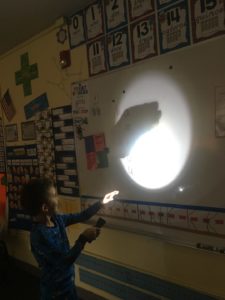 This week we had a great time learning in our new Sombras unit. The stories provided us with great information on different light sources and how shadows and shade are formed. We talked about and practiced how the position of the light (flashlight, lamp, sun, etc.) from the landing surface will change the size and shape of the shadow.
This week we had a great time learning in our new Sombras unit. The stories provided us with great information on different light sources and how shadows and shade are formed. We talked about and practiced how the position of the light (flashlight, lamp, sun, etc.) from the landing surface will change the size and shape of the shadow.
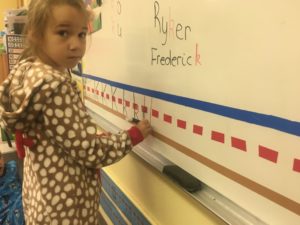
Tall letters touch the sky. Every letter sits on the ground and touches the fence in the middle.
Our weekly objectives were to:
- correctly identify and write the upper and lower case letters: Kk, Ll and Mm
- read, write and form the sight words: bebé, papá, mamá
- write using lines to correctly form letters and words.
- ask and answer questions about a story.
- retell important facts from a non-fiction story.
- write a sentence in the weekly journal using a capital letter at the beginning and punctuation at the end.
- use the daily sight word in a complete sentence.
- understand the difference between a word, sentence fragment, and a complete sentence.
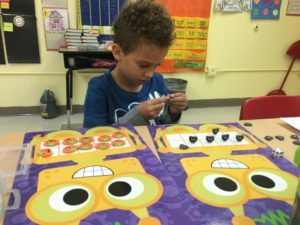
2 groups add together to make a larger number.
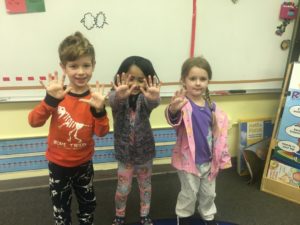
Making the number of the day: 25!
Las matemáticas
Everyone is doing a great job with the number identification, counting, counting on, and number formation.
Our weekly objectives were to:
- show various ways to form the number 5.
- use tens frames and dice to show how adding two numbers together forms a whole group.
- count on from given numbers and identify the following number.
- identify one more than and one less than a given number.
History & Geography
This week we began our next unit on Native Americans of North America. As an introduction we talked about who the first people were who lived on the continents of North and south America and how there are many, many different groups of these people called tribes. We looked at a map and identified North and South America as well as specific regions of the United States such as Northeast, Southeast, Southwest, and the Pacific Northwest.
Our objectives this week were:
• understand that Native Americans were the first inhabitants of North America
• explain that there are many tribes of Native Americans
• begin to contrast and compare your life to Native Americans with a focus on clothing, food, and shelter.
Science
This week we in our science domain we learned worked on a farm counting book and vegitable/ fruit identification and counting sheet. We also discussed and read about how seasons affect what happens on a farm.
Our objectives were to:
• describe a farmer’s job
• describe how farmers protect their crops from drought and pests
• sequence the seasonal rhythm of planting, growing, and harvesting
English Spelling/Writing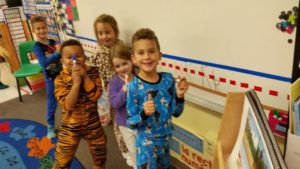
In our journals the class finished their farm and barn entry and had fun stamping different types of animals on to their page. about the farm. Our word wall words this week were: you, in, of. This week in spelling the red group got a new spelling sort on animals and the blue group is sorting “ad” family words.
Specialists:
Character Education with Ms. Jennie
This month we are focusing on the theme of responsibility. We are talking about what this means in practical terms and of course it includes everything from helping our parents/families and doing our schoolwork to taking responsibility for our mistakes by telling the truth, apologizing, and accepting the consequences (no excuses, blame-shifting, etc.). We have a fun little song to the tune of Mickey Mouse that helps us remember what responsibility looks like. We read the Aesop’s fable The Ant and the Grasshopper about the responsible ant who stored up food for the winter and the lazy grasshopper who lazed around instead. And then we’ll be reading Horton Hatches the Egg next week! We are focusing on how our actions have consequences!
